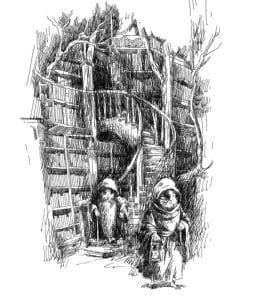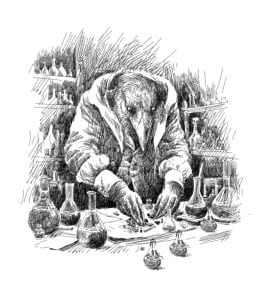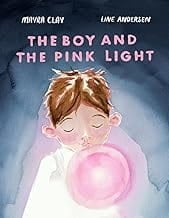A large family getaway at Christmas might seem like a great idea, or it might be your worst nightmare. However, what you do not imagine is that you will find yourself in a real world nightmare; well this story brings your worst fears to fruition and at what is supposed to be the happiest time of the year.
Masen, his brother Joss and Cousin Connor, together with their families are sharing a holiday  home in Wales for the festivities. The boys are sleeping in a mobile home away from the main house, but are warm and well fed. Like all young people, they are up early on Christmas morning to explore the fascinating parcels under the tree. What they did not expect was to find the house empty, with all of the adults missing, even their beds had not been slept in! The strangest thing was a series of weird miniature christmas trees that had suddenly died during the night; could there be a connection between these events? As the boys begin a search for the adults they discover that all the other local houses are also empty, then they see some people who appear to be in a daze and are walking southwards, towards the sea. It is only when they encounter a young girl called Gloria, that they think they might get help. She and her father have avoided the infection and will provide a safe haven until the family is found, but what has caused this catastrophe in the first place? Of course the main question is whether the families can be found and just how widespread is this contagion that is affecting everyone?
home in Wales for the festivities. The boys are sleeping in a mobile home away from the main house, but are warm and well fed. Like all young people, they are up early on Christmas morning to explore the fascinating parcels under the tree. What they did not expect was to find the house empty, with all of the adults missing, even their beds had not been slept in! The strangest thing was a series of weird miniature christmas trees that had suddenly died during the night; could there be a connection between these events? As the boys begin a search for the adults they discover that all the other local houses are also empty, then they see some people who appear to be in a daze and are walking southwards, towards the sea. It is only when they encounter a young girl called Gloria, that they think they might get help. She and her father have avoided the infection and will provide a safe haven until the family is found, but what has caused this catastrophe in the first place? Of course the main question is whether the families can be found and just how widespread is this contagion that is affecting everyone?
This is an absolutely fantastic story that has been quoted as taking inspiration from “The Day of the Triffids” by John Wyndham, so if this new story can encourage young readers to try this classic tale I will be very happy. The underlying plot that we are slowly made aware of is quite chilling and the perpetrators are even more so, because thy actually think that what they are doing is for the good of humanity and fail to understand the realities of life. The three boys are typical in their interests and feelings and we have the gradual growth of empathy and familial feelings as they have to depend on each other, even if they don’t always understand why the others are acting in a given way. This really is a book that leaves an impact and gives us as many questions as answers. It will make a great present for this year and will be a firm favourite in years to come.
About Emma
Once upon a time (in school), Emma was told she had to choose between being a scientist and a creative but deep down she knew she could be both.
creative but deep down she knew she could be both.
Her favourite things in the world are: badges, Death On the Nile (1978), hats, foxes, deserts, desserts and Buck Rogers in the 25th Century. She’s not sure which holiday is best – Halloween or Christmas (she loves all things spooky, but also presents and singing Christmas carols.) Her one regret in life is never having trained to be an astronaut.
Picture from Chicken House Books.
Author information from her website, with thanks.

 Silver and Captain Hook. However there are also a wealth of pirates who actually lived and whose exploits formed the basis of these fictional stories. So, it is no wonder that we still have an abundance of stories which include these mythical sounding characters.
Silver and Captain Hook. However there are also a wealth of pirates who actually lived and whose exploits formed the basis of these fictional stories. So, it is no wonder that we still have an abundance of stories which include these mythical sounding characters. to come from the book called “The Pirate’s Portolano”, which is designed as a guide to the sea world they inhabit and also the pirates who are the greatest danger. The “Amazon Princess” is a multi tiered vessel, with a similar number of decks to some of the mega-liners that cruise the world today. In some ways they remind me of the travelling cities imagined by Philip Reeve in “Mortal Engines” and by William Nicholson in the “Windsinger” series. The author has created a world that is both familiar and also strange, so that the audience is never quite sure what will happen next. Luckily the plot seems to suggest that we should be ready for another thrilling instalment in the future and I will definitely be looking forward to learning more about Kitty and her adventures.
to come from the book called “The Pirate’s Portolano”, which is designed as a guide to the sea world they inhabit and also the pirates who are the greatest danger. The “Amazon Princess” is a multi tiered vessel, with a similar number of decks to some of the mega-liners that cruise the world today. In some ways they remind me of the travelling cities imagined by Philip Reeve in “Mortal Engines” and by William Nicholson in the “Windsinger” series. The author has created a world that is both familiar and also strange, so that the audience is never quite sure what will happen next. Luckily the plot seems to suggest that we should be ready for another thrilling instalment in the future and I will definitely be looking forward to learning more about Kitty and her adventures. with additional support needs in the UK.
with additional support needs in the UK. completely wrong about so many of my assumptions. This is one of those books that really makes you wonder about what is real and what is in the characters’ imagination.
completely wrong about so many of my assumptions. This is one of those books that really makes you wonder about what is real and what is in the characters’ imagination. exchange for the children being taken to the largest town in the region of Dickerson’s Sea. What follows is the most amazing and fantastical tale of pirates, spirits and the power of family and friendship. However, the pirates are undercover, after they were all banned fifteen years before and most were actually killed by the Queensmen, followers of the late lamented Queen Hail Meridian, who had also been killed in the uprising. The story is a complete roller-coaster ride, where you are not always sure what is real and what is a form of hallucination.
exchange for the children being taken to the largest town in the region of Dickerson’s Sea. What follows is the most amazing and fantastical tale of pirates, spirits and the power of family and friendship. However, the pirates are undercover, after they were all banned fifteen years before and most were actually killed by the Queensmen, followers of the late lamented Queen Hail Meridian, who had also been killed in the uprising. The story is a complete roller-coaster ride, where you are not always sure what is real and what is a form of hallucination. of a sailor and obeying orders from those more senior. Viola, on the other hand, wants to discover the mystery surrounding the book and also what happened during the bloody uprising, which took place when she was a very small child. The author has blended the main story, with a sub text about how seagulls can attack humans and turn them into spirits and giving them a silver circle within the eye. Viola discovers that she has this issue and yet she has not been turned into the spirit, although she does start to hear the voice of others.
of a sailor and obeying orders from those more senior. Viola, on the other hand, wants to discover the mystery surrounding the book and also what happened during the bloody uprising, which took place when she was a very small child. The author has blended the main story, with a sub text about how seagulls can attack humans and turn them into spirits and giving them a silver circle within the eye. Viola discovers that she has this issue and yet she has not been turned into the spirit, although she does start to hear the voice of others.
 What an absolutely fabulous but crazy adventure this is. When wannabe tyrants Prince Perseus and his arch enemy Princess Cassiopeia, both land on Earth, together with their robot guards, it is with the intention of wiping us out. The trouble is they don’t choose the right place, or people, to negotiate with. Hillman is a young boy, being looked after by his granddad and doesn’t take kindly to his dad’s car being flattened by an alien spaceship. This is Cassiopeia’s ship; the only one, as the rest of her invasion fleet has been accidentally miniaturized, putting her plans in danger. Prince Perseus finds himself at the local rubbish dump, where he is saved by a young girl called Roz; she sees the potential to use the invaders to save her granddad’s care home, but is robbing a bank the way to achieve this?
What an absolutely fabulous but crazy adventure this is. When wannabe tyrants Prince Perseus and his arch enemy Princess Cassiopeia, both land on Earth, together with their robot guards, it is with the intention of wiping us out. The trouble is they don’t choose the right place, or people, to negotiate with. Hillman is a young boy, being looked after by his granddad and doesn’t take kindly to his dad’s car being flattened by an alien spaceship. This is Cassiopeia’s ship; the only one, as the rest of her invasion fleet has been accidentally miniaturized, putting her plans in danger. Prince Perseus finds himself at the local rubbish dump, where he is saved by a young girl called Roz; she sees the potential to use the invaders to save her granddad’s care home, but is robbing a bank the way to achieve this? Perseus, arrives on Earth with one mission: destroy the planet. Why? Because he feels like it—and because he thinks Earth smells funny. (To be fair, he has landed on a rubbish dump).
Perseus, arrives on Earth with one mission: destroy the planet. Why? Because he feels like it—and because he thinks Earth smells funny. (To be fair, he has landed on a rubbish dump). from the embarrassment of shrinking her entire space fleet while making a smoothie. Their bickering, as the story goes on, starts to resemble two local councillors arguing furiously about the size of a hedge.
from the embarrassment of shrinking her entire space fleet while making a smoothie. Their bickering, as the story goes on, starts to resemble two local councillors arguing furiously about the size of a hedge.
 reads, but this one definitely fits the bill. Not least because the author loves my favourite authors, especially Dorothy L Sayers, but also because he comes from Bristol, where I worked in libraries for 20 years.
reads, but this one definitely fits the bill. Not least because the author loves my favourite authors, especially Dorothy L Sayers, but also because he comes from Bristol, where I worked in libraries for 20 years. book: The Penguin Complete Sherlock Holmes. For the next few days I sat in the garden, moving only to eat and sleep, and read my way through those 56 short stories and 4 novels – diving headlong into the world of
book: The Penguin Complete Sherlock Holmes. For the next few days I sat in the garden, moving only to eat and sleep, and read my way through those 56 short stories and 4 novels – diving headlong into the world of

 In this story, the central character is a young boy, who is full of life and enjoyment of the people and world around him. Then one day he wakes up and the world seems a dark and upsetting place and he doesn’t know how to cope with the changes. The appearance of a magical pink light acts as a catalyst, in that the boy is able to speak to it and explain his feelings. He says that nothing seems to make sense anymore and he can’t find a way to feel better.The pink light tells him to take the light into his heart and whenever he is sad, to think about the warmth and love of the lights. This works for the young boy and he is able to use the pink light to help himself, but he is also able to help others who are in need of help and support.
In this story, the central character is a young boy, who is full of life and enjoyment of the people and world around him. Then one day he wakes up and the world seems a dark and upsetting place and he doesn’t know how to cope with the changes. The appearance of a magical pink light acts as a catalyst, in that the boy is able to speak to it and explain his feelings. He says that nothing seems to make sense anymore and he can’t find a way to feel better.The pink light tells him to take the light into his heart and whenever he is sad, to think about the warmth and love of the lights. This works for the young boy and he is able to use the pink light to help himself, but he is also able to help others who are in need of help and support.
 About BBNYA
About BBNYA Whilst this story is listed as being adult, I think that it will be enjoyed by quite a number of Young Adults. This is a novella of just over 100 pages and follows 12 year old Mina, as she desperately tries to escape from the solders who had just killed her father. She finds refuge in the caravan of an old woman called Gam Gam, who manages to get rid of the soldiers, at least temporarily. Mina discovers that she and her saviour have more in common than she could image. Whilst Mina is a neuromancer and can read and remove people’s thoughts, Gam Gam is a necromancer and can raise the dead, even if only for a short while. The events of the story take place over just a few days.
Whilst this story is listed as being adult, I think that it will be enjoyed by quite a number of Young Adults. This is a novella of just over 100 pages and follows 12 year old Mina, as she desperately tries to escape from the solders who had just killed her father. She finds refuge in the caravan of an old woman called Gam Gam, who manages to get rid of the soldiers, at least temporarily. Mina discovers that she and her saviour have more in common than she could image. Whilst Mina is a neuromancer and can read and remove people’s thoughts, Gam Gam is a necromancer and can raise the dead, even if only for a short while. The events of the story take place over just a few days.








 This story is set in a magical world, where the normal people live side by side with the Veg Witches and the Drupe Mages (wizards) and depend on the witches to help grow their crops, as well as provide medical care and advice. The mages, live in a castle and tend to keep away from the locals and they are also not very good at commonsense magic! The main character is Glunda Ashwillow, who is about to become the current head witch and Holder of the Golden Key; unfortunately the mages, in the guise of Alar Reave have decided not to hand over the Key (which is shared every six months), but intend to carry out all the magic themselves. As I am sure you can imagine this turns out to be a recipe for disaster. The question is whether the mages can be made to see sense, the local farmers can save their crops and the veg witches can get enough food to last the winter?
This story is set in a magical world, where the normal people live side by side with the Veg Witches and the Drupe Mages (wizards) and depend on the witches to help grow their crops, as well as provide medical care and advice. The mages, live in a castle and tend to keep away from the locals and they are also not very good at commonsense magic! The main character is Glunda Ashwillow, who is about to become the current head witch and Holder of the Golden Key; unfortunately the mages, in the guise of Alar Reave have decided not to hand over the Key (which is shared every six months), but intend to carry out all the magic themselves. As I am sure you can imagine this turns out to be a recipe for disaster. The question is whether the mages can be made to see sense, the local farmers can save their crops and the veg witches can get enough food to last the winter?
 In this wonderful and evocative new book by Jasbinder Bilan we are taken from the heat and exoticism of India, to the hustle and bustle of London, where our heroine discovers that danger is lurking in the most unlikely places. Naeli is the daughter of an Indian mother, who was a famous musician, and a British father, a doctor who was also a very proficient violinist. Her father had to return to Britain when she was five years old, but now that her mother had died, she does not know hat her future holds. When a mysterious letter arrives for her, it includes a ticket to England and some money, and so begins her adventure to try and find her missing father. On the trip to England she makes friends with a young Anglo-Indian boy, who is going back to his school in Westminster. However, it is when Naeli arrives in England that the real action begins. After a rather difficult start, Naeli is taken to the home of her uncle, someone she has never heard of, but who seems happy to see her. Unfortunately, he gradually shows his true colours, and he is not a very nice person. What follows is a true Victorian melodrama, with kidnap, family secrets and a mysterious and brooding family house in the wilds of Northumberland.
In this wonderful and evocative new book by Jasbinder Bilan we are taken from the heat and exoticism of India, to the hustle and bustle of London, where our heroine discovers that danger is lurking in the most unlikely places. Naeli is the daughter of an Indian mother, who was a famous musician, and a British father, a doctor who was also a very proficient violinist. Her father had to return to Britain when she was five years old, but now that her mother had died, she does not know hat her future holds. When a mysterious letter arrives for her, it includes a ticket to England and some money, and so begins her adventure to try and find her missing father. On the trip to England she makes friends with a young Anglo-Indian boy, who is going back to his school in Westminster. However, it is when Naeli arrives in England that the real action begins. After a rather difficult start, Naeli is taken to the home of her uncle, someone she has never heard of, but who seems happy to see her. Unfortunately, he gradually shows his true colours, and he is not a very nice person. What follows is a true Victorian melodrama, with kidnap, family secrets and a mysterious and brooding family house in the wilds of Northumberland.
